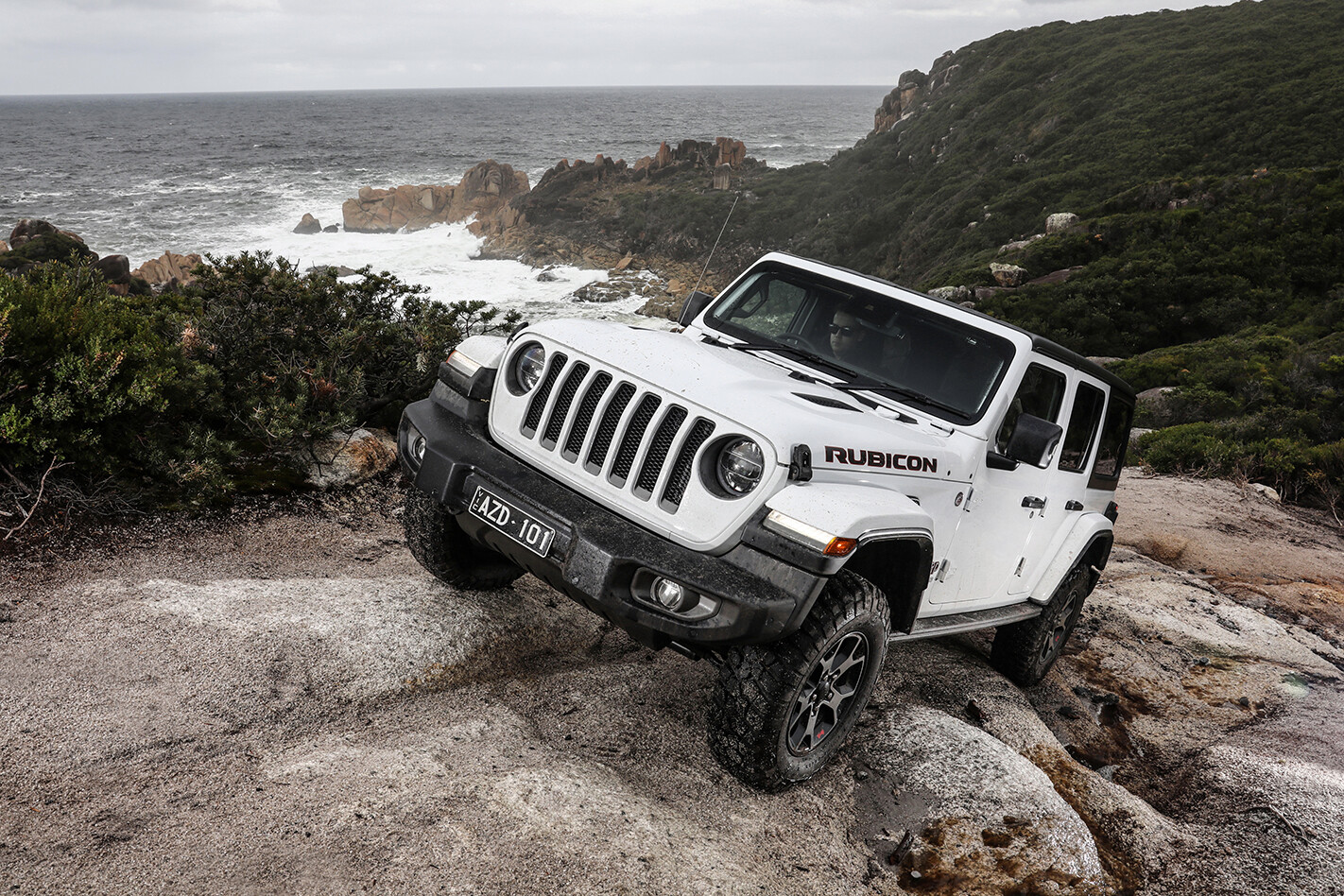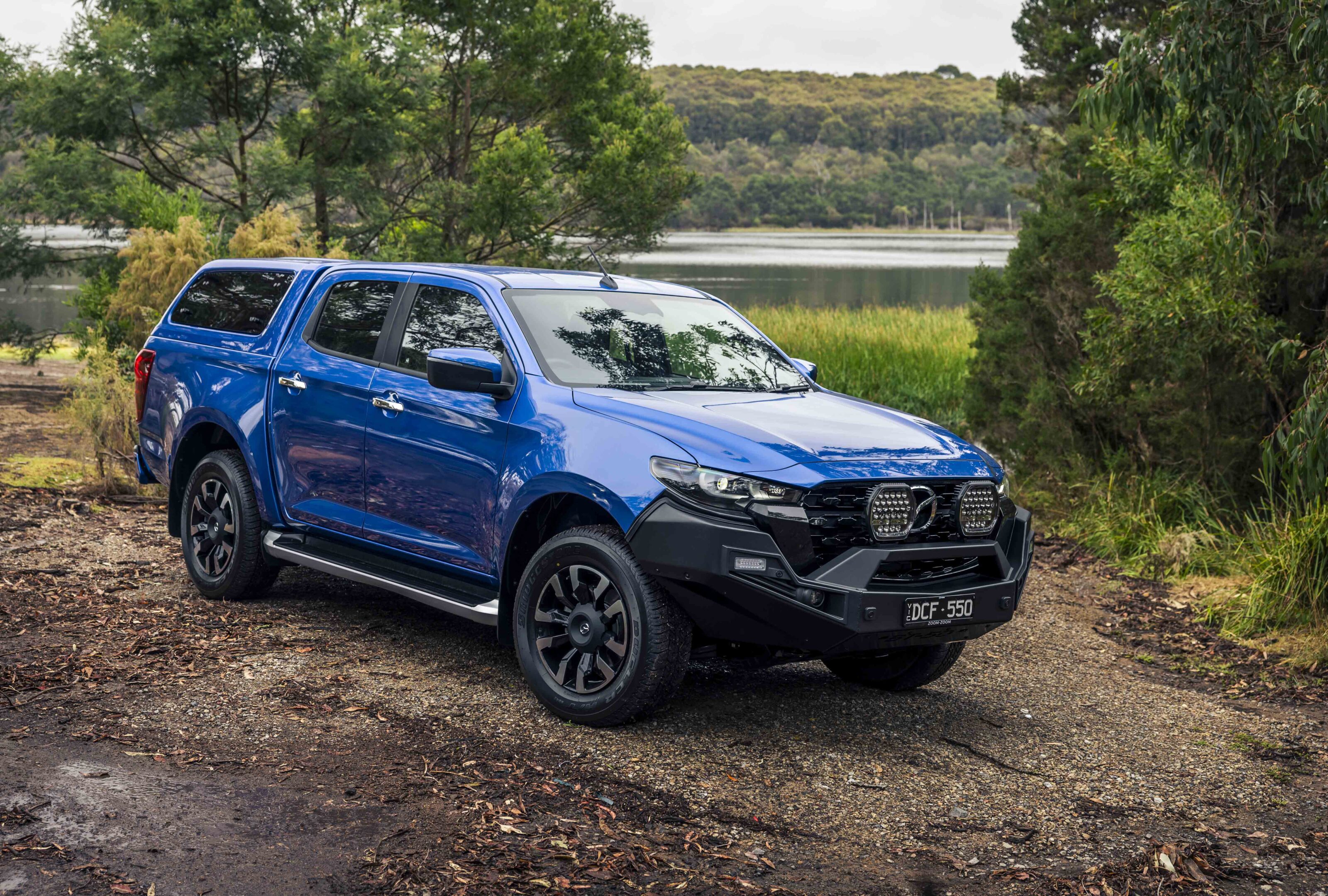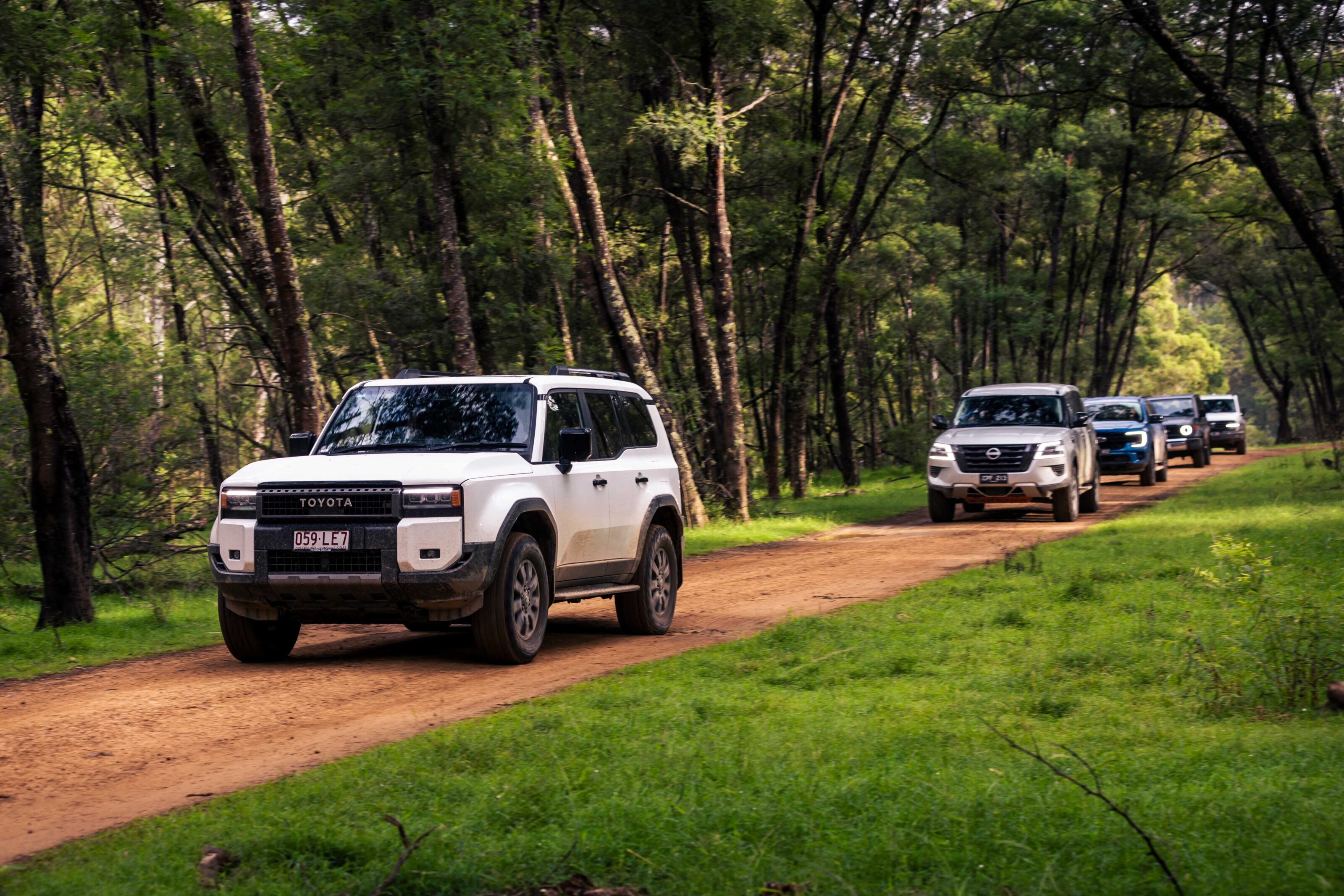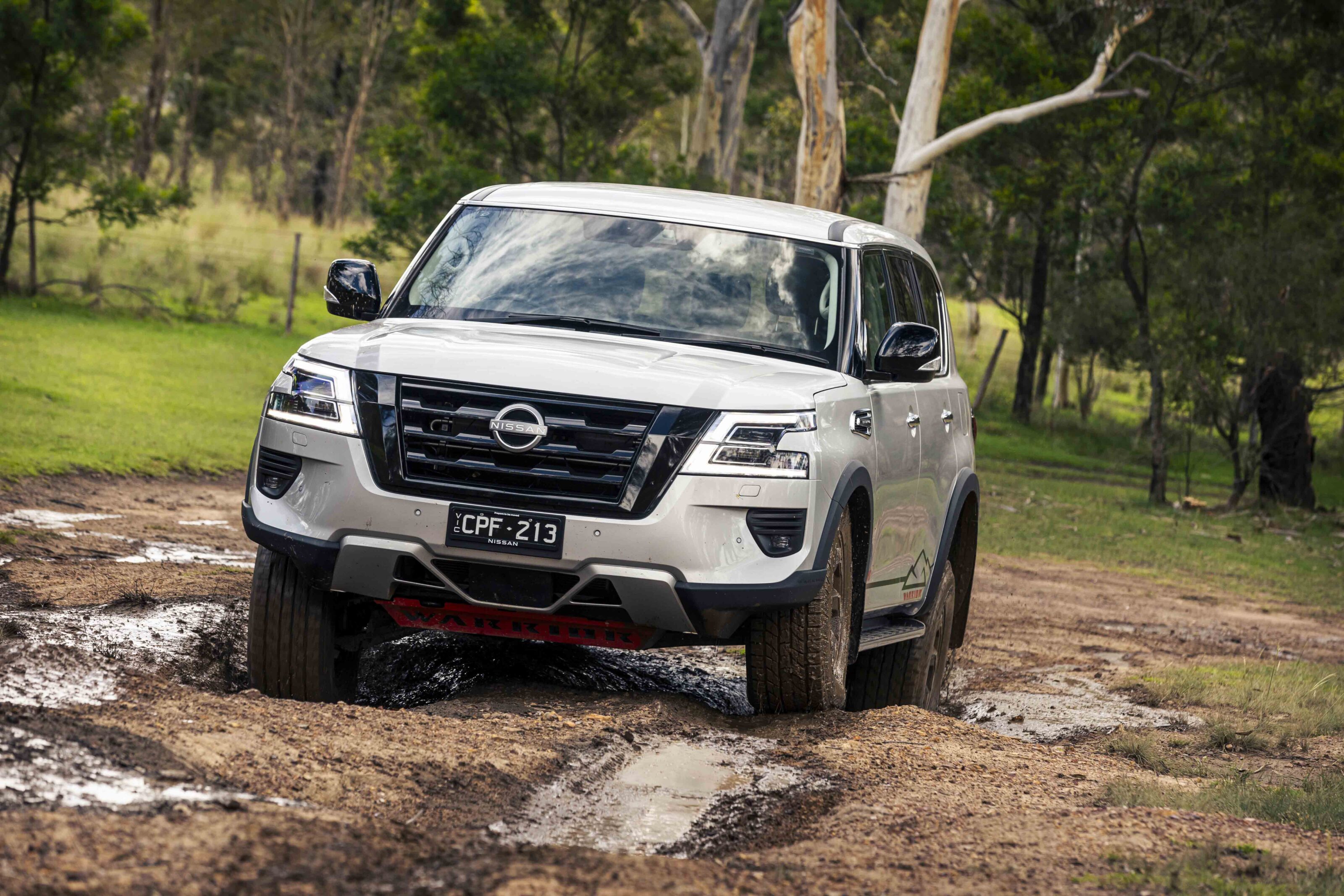It’s been a long time coming but Jeep’s JL Wrangler has finally arrived in Australia, more than a year after it launched in the United States. The new Wrangler comes in a six-model line-up set to appeal to a wider range of buyers for the traditional off-road vehicle.
Notably, only one variant of the Wrangler range is available as a two-door short wheelbase, only one of them is available with a diesel engine option, and none of them are offered with a manual gearbox.
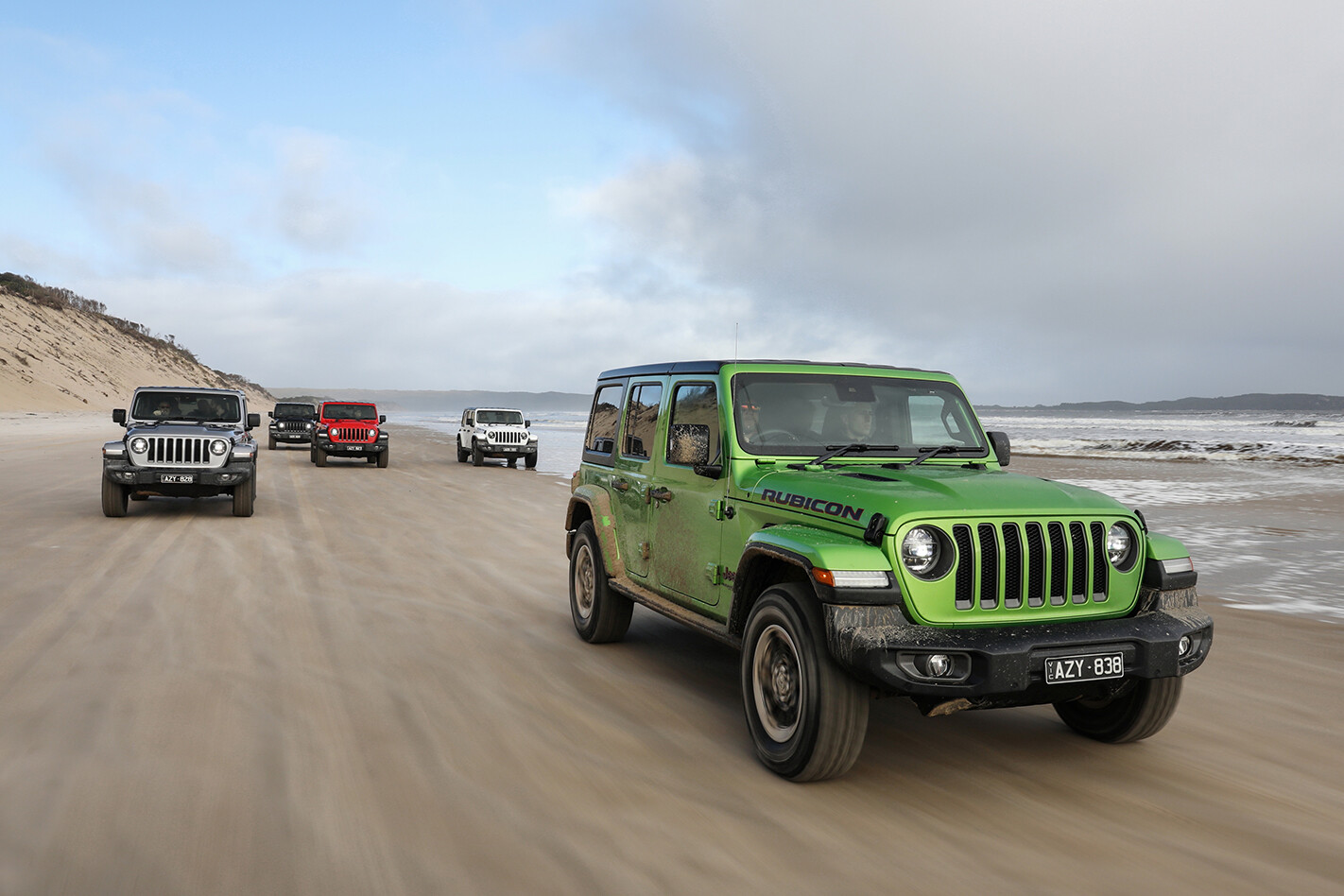
All of the international-specification Wranglers are fitted with the ZF-sourced eight-speed automatic transmission and the most common engine is the latest incarnation of Jeep’s Pentastar 3.6-liter V6 petrol mill.
That’s not a bad thing, as the engine makes a healthy 209kW of power and 347Nm of torque. The eight-speed TorqueFlight, as FCA brands like to call it, adds refinement and fuel economy to the new Wrangler which otherwise will feel very familiar to anyone who has spent time with the previous JK model.
The Wrangler takes its DNA from the original Jeeps of WW2, and the JK was the most successful civilian Jeep since, so the Yank off-road brand hasn’t deviated too far from the proven formula.
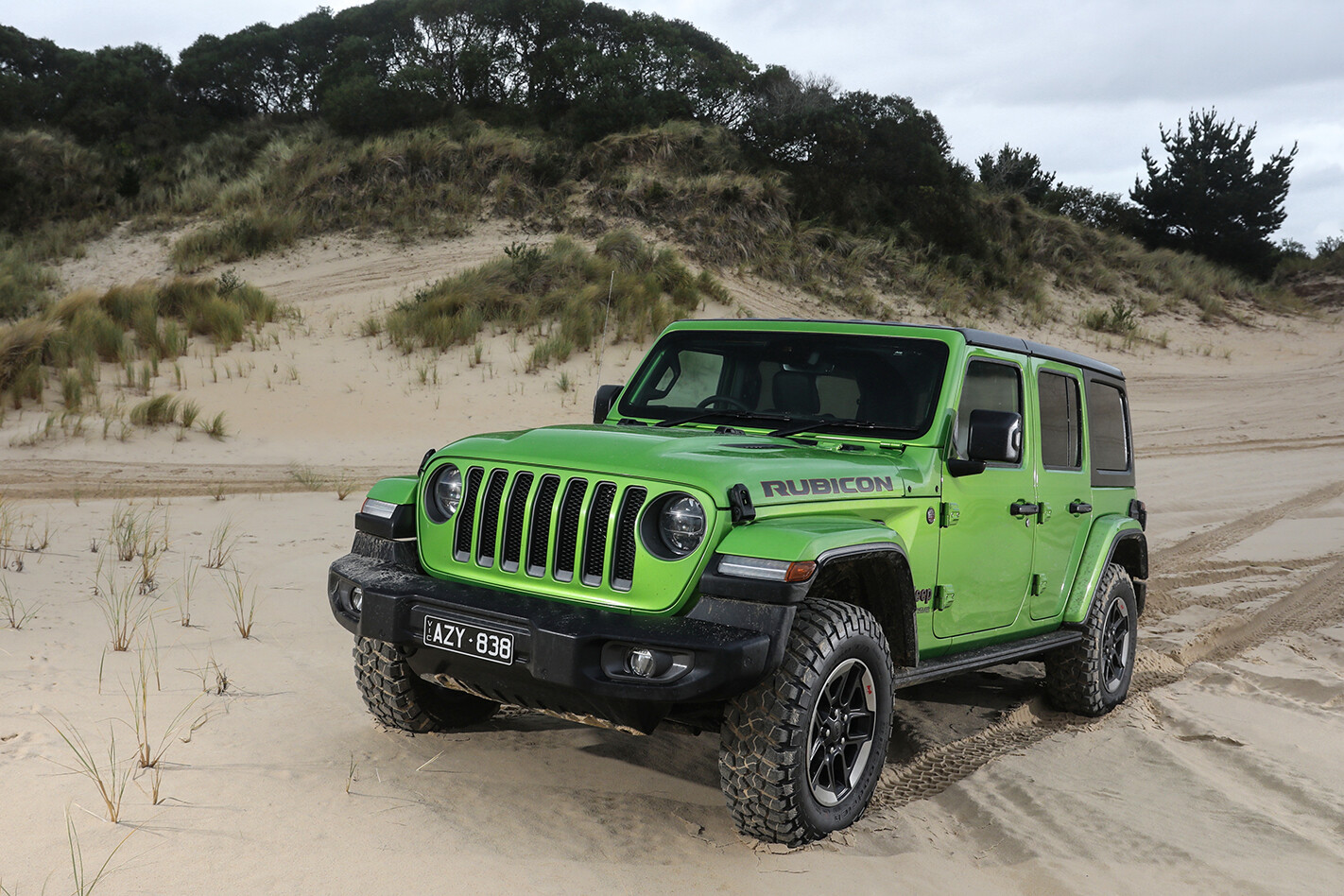
The JL remains a body-on-frame vehicle with live axles front and rear, an old-school and almost agricultural body design and construction, and a strong focus on its off-road performance. In fact, with the new JL, the Wrangler retains its title as the most off-road-capable new vehicle to drive straight off the showroom floor.
While others might say their kitted-up 4x4s will better the Jeep in the rough, there’s probably two to three times more aftermarket off-road kit available for the JL Wrangler to take it to a whole next level of ability.
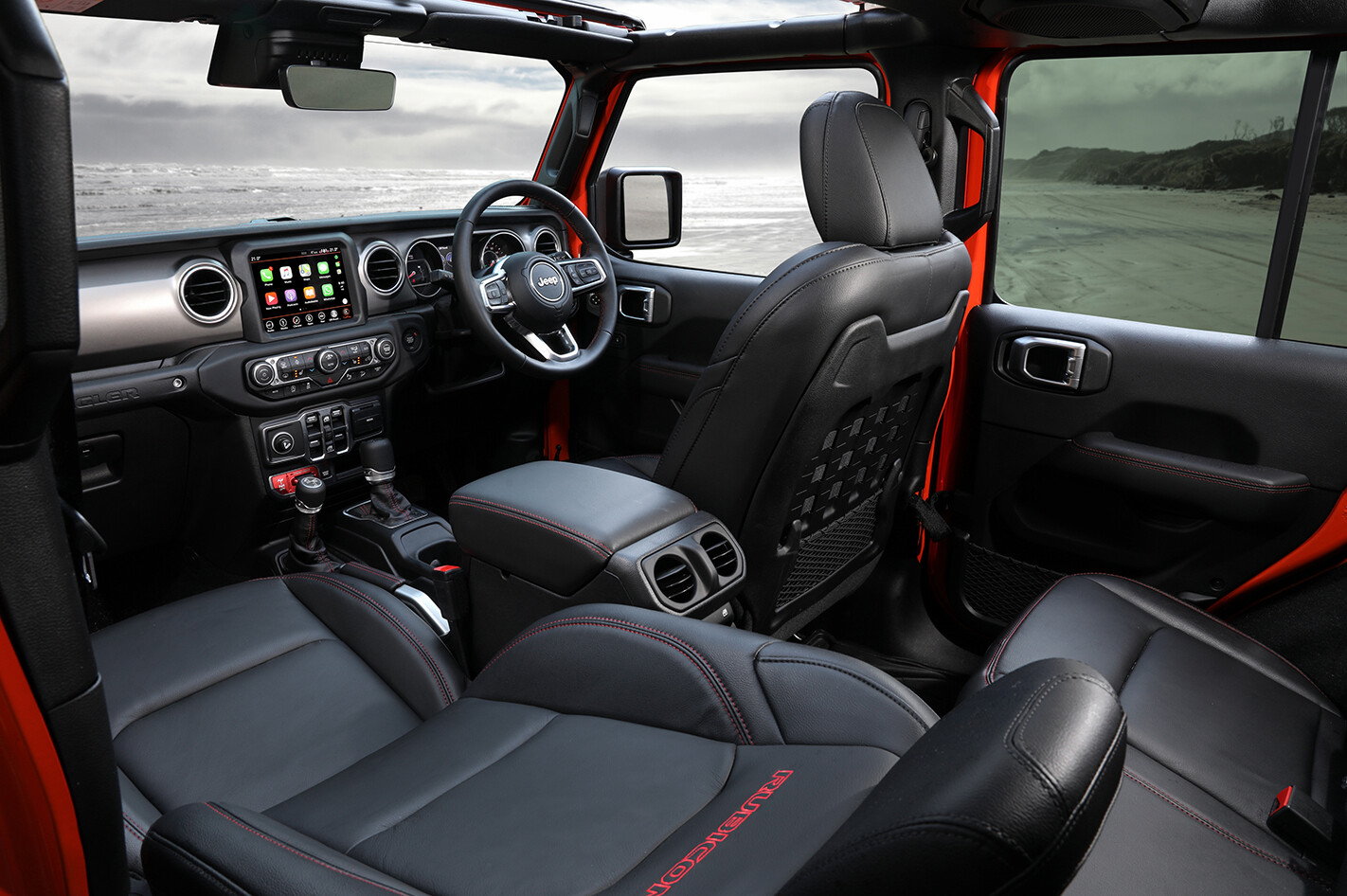
The JL brings higher levels of user-friendliness and efficiency to a vehicle that has been criticised in the past for lacking in those areas by those not so interested in Wrangler’s off-road prowess, yet who love its unique look.
The extensive use of soft-touch interior trims is evident throughout the heavily-equipped cabin. Items you would normally take for granted on modern cars like check straps on the doors are now included, and the general fit, finish and level of equipment have all been stepped up a notch or two.
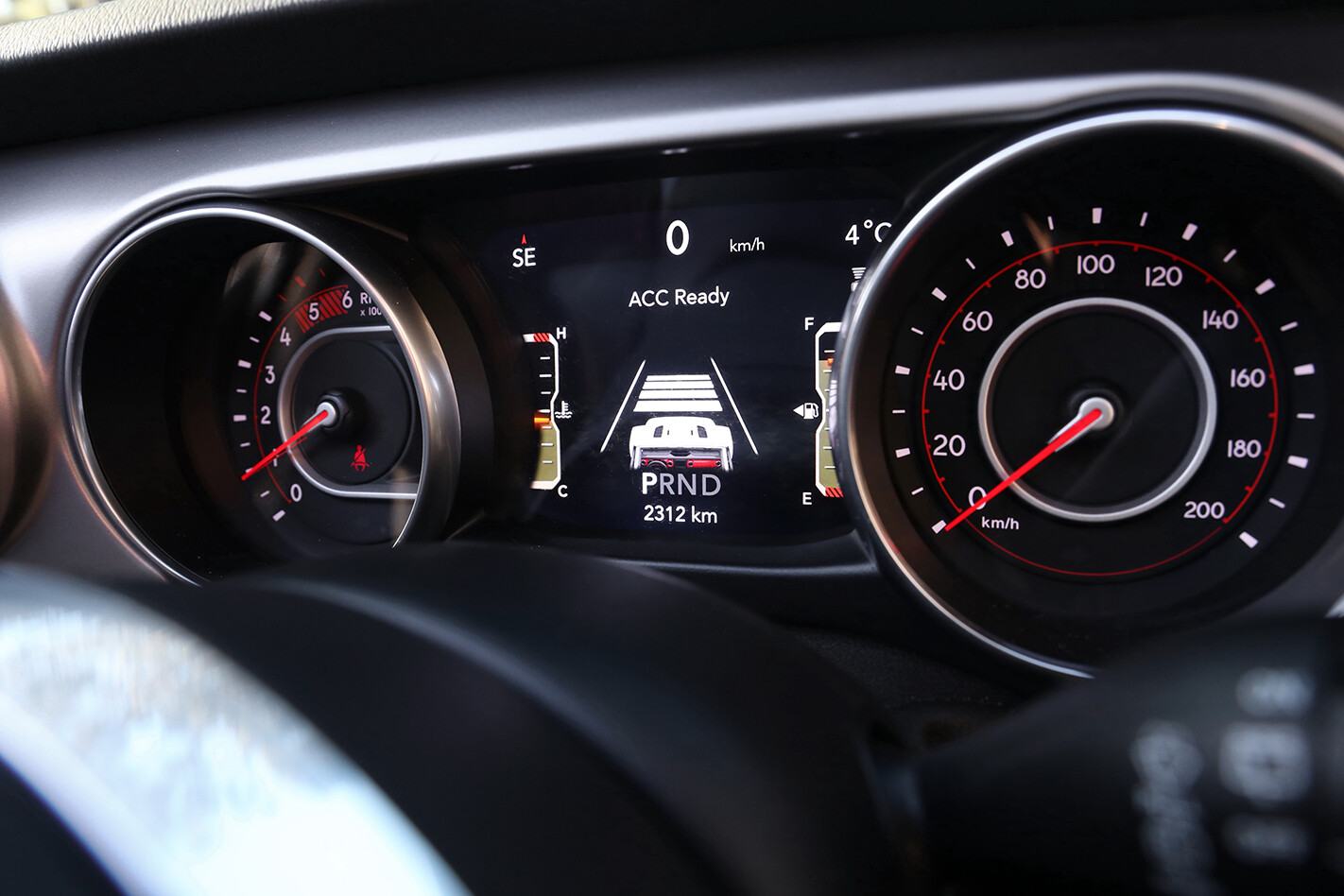
As has the safety equipment of the latest Wrangler. The JL attracted widespread criticism late last year when it only achieved low 1-star safety rating in Euro NCAP testing. The vehicle tested there was a 2018 model and was not fitted with the added electronic chassis aids that the 2019 Australian vehicles are fitted with.
Safety features include Autonomous Emergency Braking (AEB), blind spot monitoring and cross traffic alerts in addition to the ABS, ESC, airbags and electronic roll mitigations systems. While these electronic systems will aid accident avoidance, they fail to address the poor occupant protection noted in the Euro NCAP testing where deformation of the A-pillar and driver-side (LHD) footwell were also criticised.
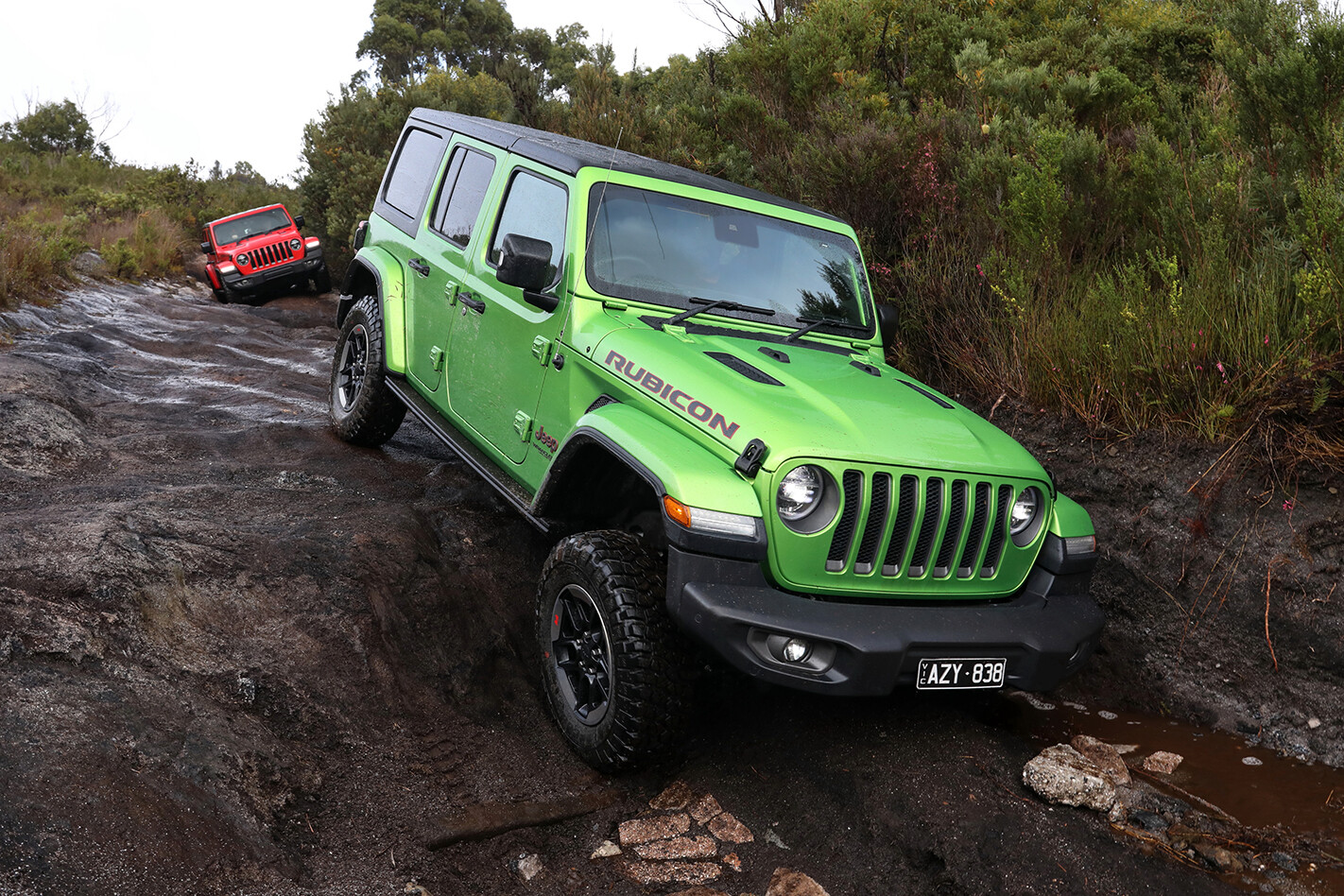
The Wrangler remains a specialised off-road vehicle and it will never achieve a 5-Star safety rating; at least not in the present, off-road focused design that we love it for. But the electronics fitted to the 2019 Australian-specification models should help it progress above the 1-star rating it scored in Europe, should FCA chose to have it retested.
The Tasmanian launch was for the most off-road focused Rubicon models only and we are yet to drive the Overland or Sport S model in Australia. With the Rubicon’s off-road ability at the fore, Jeep Australia ambitiously selected the Climies Track on the island’s rugged and stunning west coast to showcase its prowess.
Climies covers 25 kilometres of low-speed trail, including deeply rutted climbs, rocky and sandy sections, fast-flowing water crossings and boggy mud – a true test for any production vehicle and one only Jeep would be game to attempt.
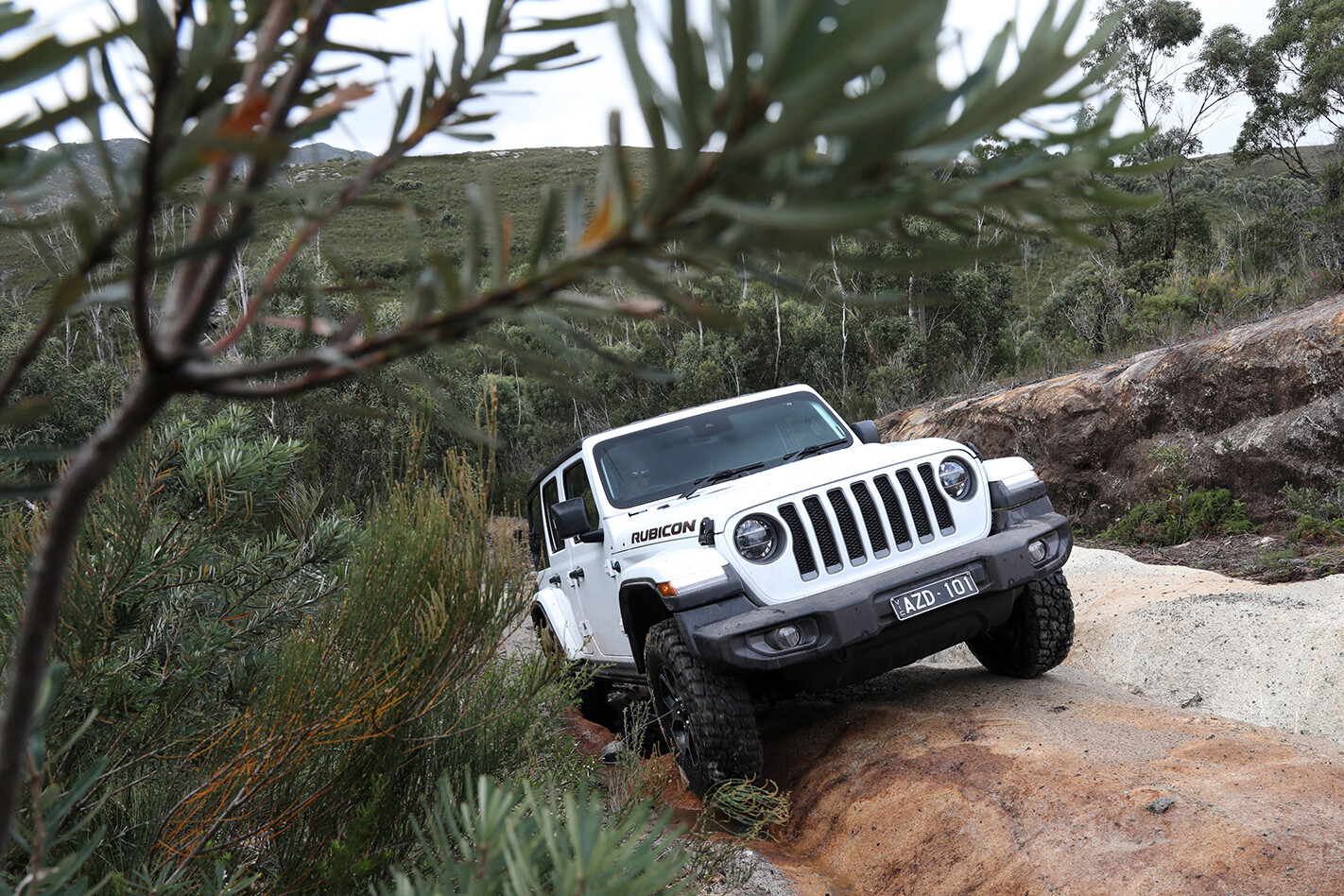
Jeep had every right to be confident in the ability of its JL Rubicon, even in the often wet and drizzling conditions on this day. In the Rubicon’s off-road arsenal are locking differentials front and rear, lower 4.1:1 gears in those diffs (and in the transfer case), a disconnecting front sway bar and 32-inch BFGoodrich Mud Terrain tyres. Yes that’s right, the Rubicon comes standard with BFG’s excellent KM3 muddies as standard kit – and it needed them on this day out!
With front swaybars disconnected, the convoy of JLs crawled their way through the ruts and holes where lesser 4x4s would have been lifting wheels and losing traction. The level of axle articulation under the JL is unrivalled in stock production vehicles and this keeps those mud tyres in contact with the ground and moving forward most of the time.
When the track got slipperier, front and rear locking differentials were employed to ease the way through, but leaving the diffs open and allowing the electronic traction control to do its thing equally impressed.
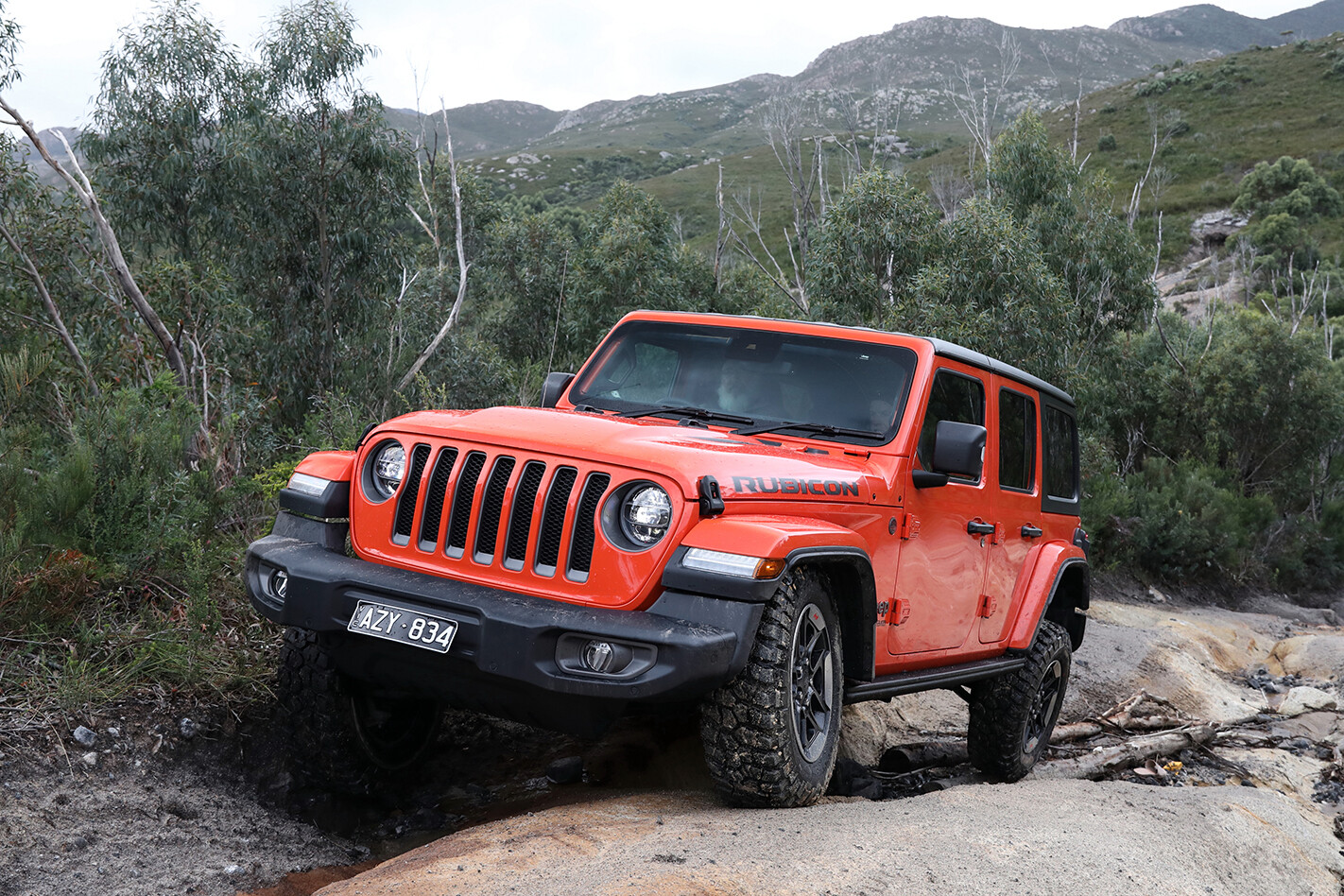
Jeep has obviously done a lot of work on the calibration of its ETC and it is now faster reacting and more capable of driving the vehicle forward without resorting to the lockers. This should be encouraging to Sport S and Overland Wrangler buyers who will have to rely on ETC in the absence of factory lockers. We look forward to putting these variants to the test soon.
The Wrangler Rubicon is the only model in the JL range to be offered with the diesel engine option and this was the first vehicle we sampled. This is an all-new diesel engine for Wrangler having previously been used in the Cherokee and some Alfa Romeo vehicles; it has no relation to the previous 2.8L diesel engine from VM Motori.
The 2.2-litre Multijet II engine is a 16-valve, aluminium-head-and-block design with a VGT and common-rail injection that meets EU6 emission regulations by employing both EGR and SCR (Adblue). In this Wrangler application, it makes 147kW at 3500rpm and 450Nm at 2000rpm and it gets along nicely in the JL which is lighter than the previous JK.
It is quieter and, when mated to the eight-speed auto, more refined than the old 2.8, delivering a near-perfect balance of performance and efficiency.
Unfortunately, the diesel is only available in the Rubicon where it attracts a $5000 premium over the V6 petrol engine and high pricing in Jeep’s new fixed price servicing system ($499/service versus $299/service for the first 5 years). These factors will lead many buyers to question the value of the diesel over the petrol despite its superior driving characteristics and efficiency. That’s a shame as the diesel engine is the better drive of the two on offer.

Not that there’s much to complain about with the old Pentastar V6. It makes its power higher in the revs than the diesel and requires a bit more right foot to get it through the rough stuff but the eight-speed auto does a fine job of keeping the mill in its sweet spot and pushing onwards.
The 2.2L diesel engine is rated at 7.5L/100km combined cycle fuel economy while the 3.6L V6 petrol is 10.3L/100km travelled.
There is a 2.0L mild hybrid, turbocharged petrol engine available in JL in the USA that is rated there at 11.7L/100km compared to the V6’s 14.0L/100km US rating.
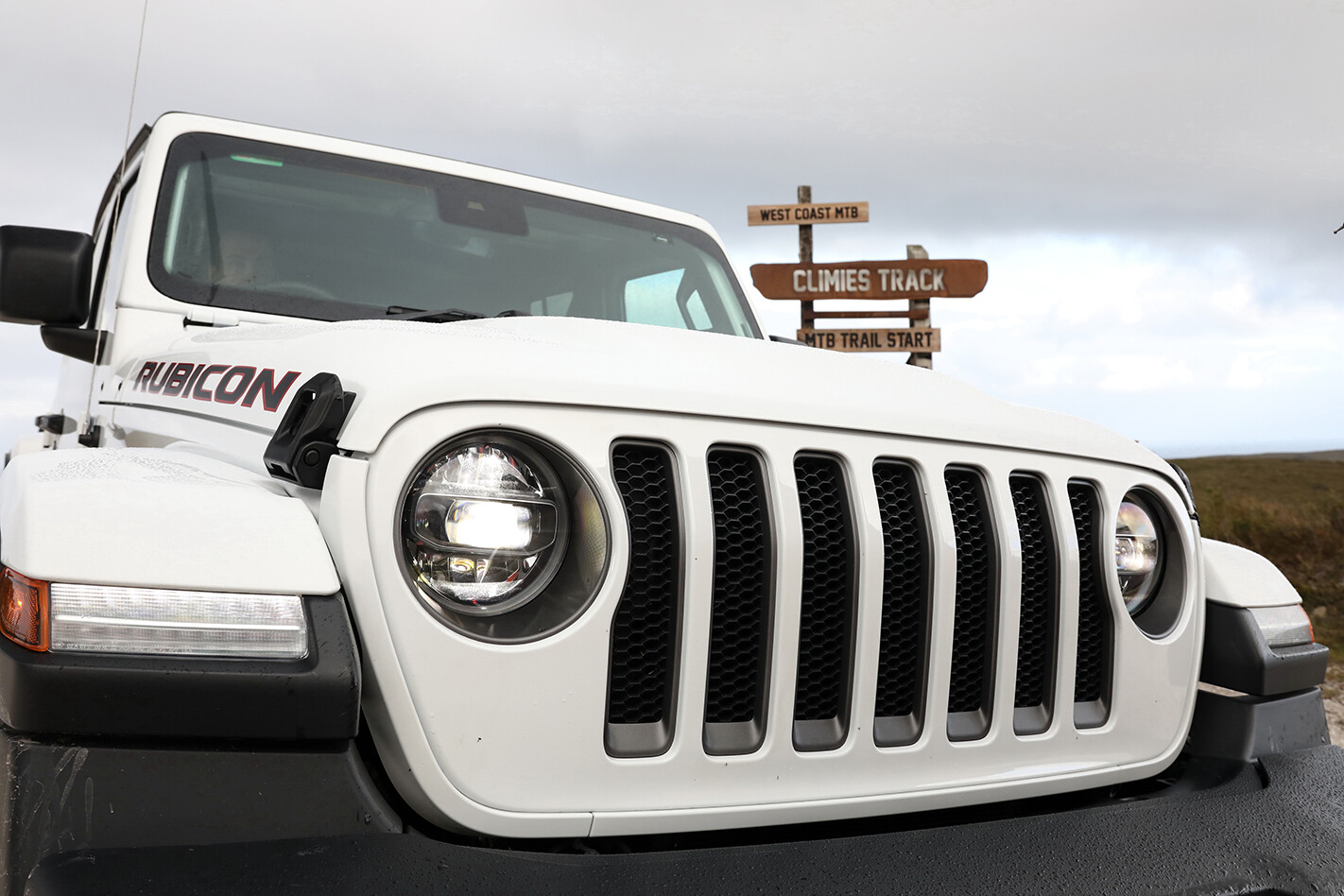
This torquey little mill (400Nm) is currently not offered in Australian Jeeps at all but Jeep Australia’s Guillaume Drelon says, “Nothing is off the table if there is a proven demand for it”. We feel this option would be popular with urban buyers who love the look of the Wrangler but are looking for better fuel economy.
All Australian Rubicons are long wheelbase four-doors and that long wheelbase creates a poor ramp over angle that had the Jeep’s undercarriage touching down multiple times on the test drive. Luckily it is well protected with metal underbody plates so drivers could feel confident of not doing damage.
The rear bumper didn’t fare so well on one of the cars in the convoy. It has a low hanging point in the centre around the number plate that scrapes on departure, and one bumper was knocked loose on the track.

The numbers that matter here are a 41.7-degree approach angle; 31.9-degrees departure; 21.2-degrees ramp-over angle and 252mm ground clearance. That gives a wading depth of 760mm and we tested that through the creeks in Tassie. The ground clearance could be better and that additional tyre height on the US-spec Rubicons (see breakout) is definitely missed.
It’s also worth noting here that the vehicles on this test and in these photographs were International specification but not full Australian spec. All of our Rubicons will be fitted with a steel winch-compatible front bumper incorporating recovery hooks as per the US models, but which is not allowed on the European variants.
The JL Wrangler is a more refined, more efficient and easier to live with a version of the JK we’re familiar with. It’s also more expensive and Jeep is justifying this price hike with a long list of added standard features that were not available in the past.
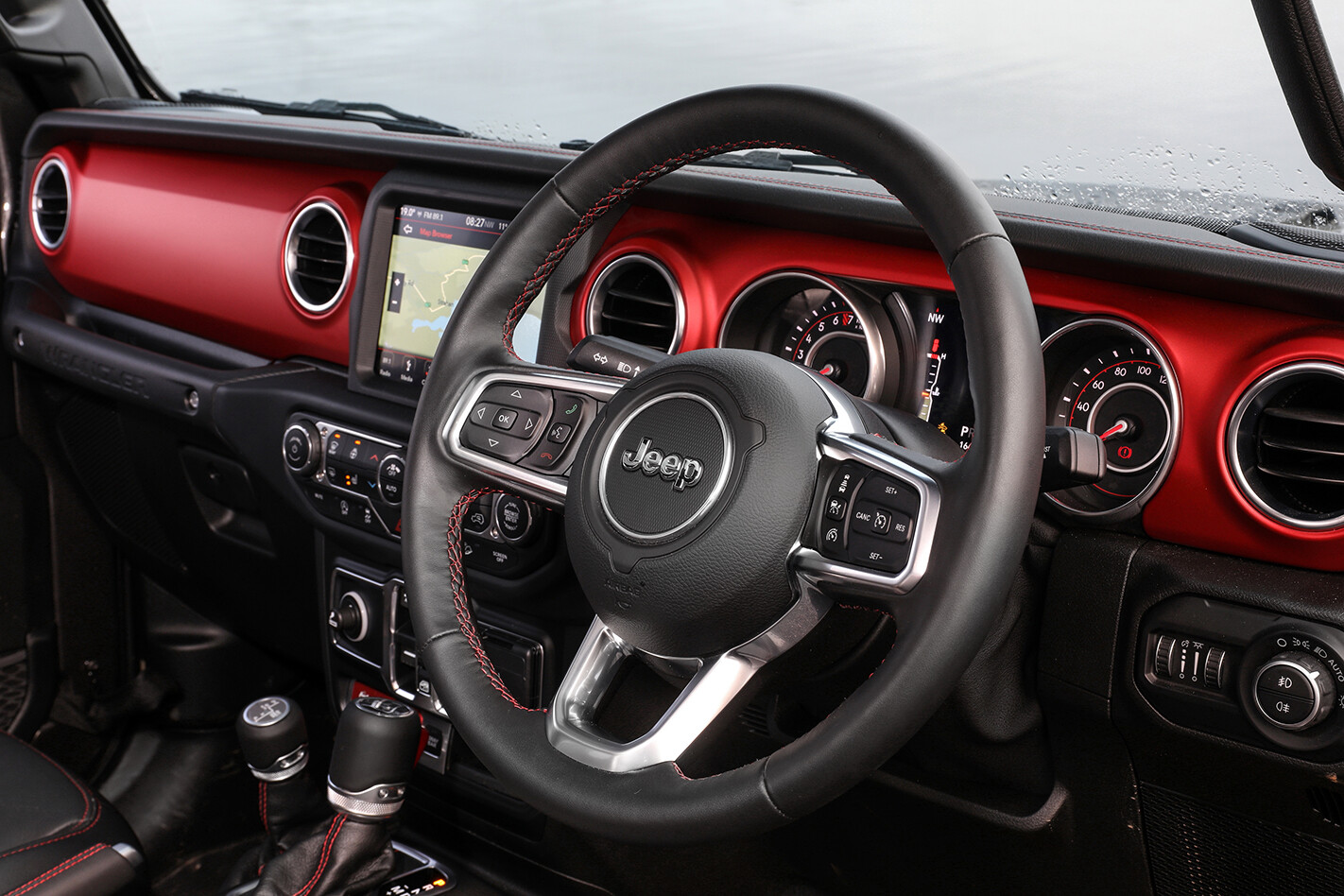
But the entry price to the model is now $10K higher than it was on a JK and the top-of-the-range Rubicon diesel is some $15K more expensive than any Wrangler before it. This will be difficult for many existing Wrangler owners and fans to follow.
Hopefully, new buyers will see beyond the price hikes and jump on board regardless.
What’s the Rubicon missing?
Unfortunately for Australian Wrangler enthusiasts, there are a few items missing from the International specification Rubicon that are available on the USA Rubis.
Aside from a short-wheelbase Rubicon and the aforementioned absence of the 2.0L eTorque engine, the most noticeable difference is that our Rubicons ride on 32-inch tyres while the US variants come standard on 33s.
Thus, American Wrangler owners are able to legally option 35s on their rigs without any suspension modifications.
There are a couple of reasons for this difference in our vehicles. The new generation Dana 44 axles fitted to the Rubicon in the USA use uni-joints while the same axles in the International-spec cars use CV joints.
This is because our cars are all fitted with the full-time 4×4 ‘Auto’ setting in the transfer case. The CV joint D44 axles are not rated to be as strong as the uni joint versions and hence are not suited to the larger tyres.
The US Rubicons are also fitted with the high-riding fender flares as standard which allow clearance for the taller tyres without any suspension lift. These are not fitted to the International models, nor are they officially available through the MOPAR accessories range here in Australia. Not that this will stop enthusiast fitting them anyway!
It will work to the advantage of specialist shops that fit higher rated aftermarket axles to Wranglers as they have done on the JK models, though. This allows 35 and 37-inch tyres to be legally (in some states) fitted to Australian JKs.


